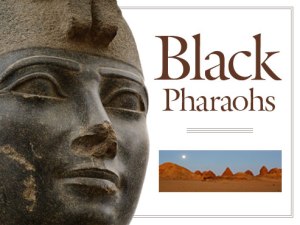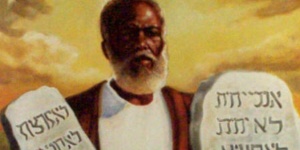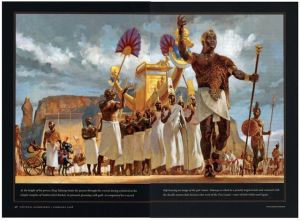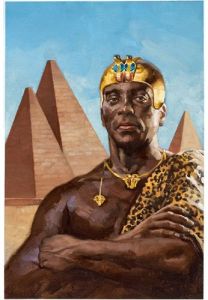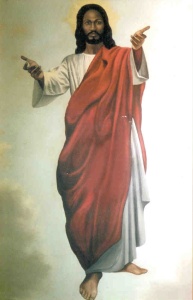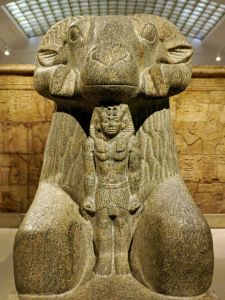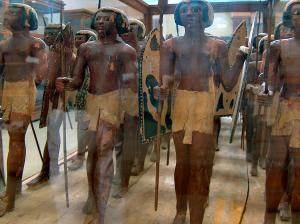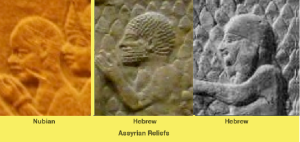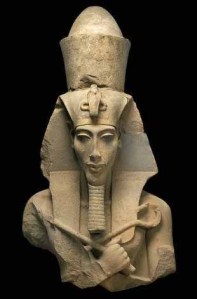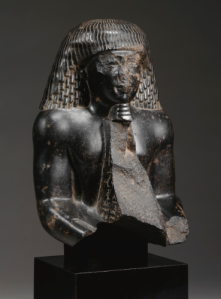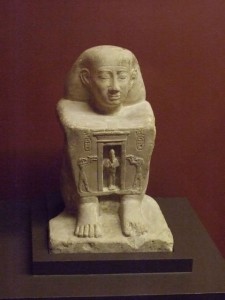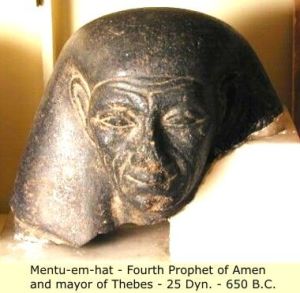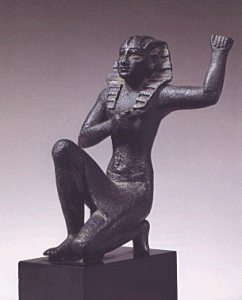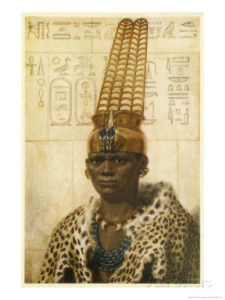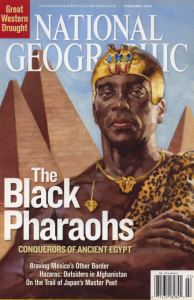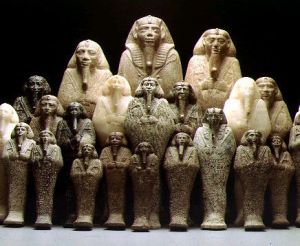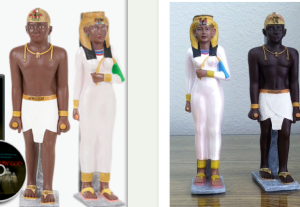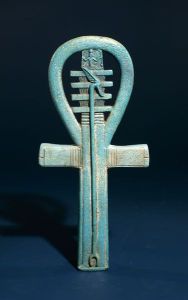“In Light of Cush/Kush the Dark”
~’The Cushites Who Overthrew Ancient Egyptians’~
By
Gregory V. Boulware
Adam, Sheth, Enosh, Kenan, Mahalalel, Jered, Henoch, Methuselah, Lamech, Noah, Shem, Ham, and Japheth with all the sons thereafter – The ‘Edomites’ born of the sons of Dishan, Uz, and Aran were the kings that reigned in the land of ‘Edom.’
~The First Book of Chronicles~
Why is so little known about the 25th Dynasty of Ancient Egypt – A Dynasty of Nubian Pharaohs – and the period in which the Holy Bible was written?
What did Abraham, David, Moses and Solomon have in common?
***In the United States today, the white-power structure continues their attempts to dictate policies and reign in the control of the ‘Black President’ in power. Their position over who gets their support is of course the white-faced power broker of Israel. In direct opposition of established policies for peace and cooperation, the latest chastisement from the GOP pit:
“Get Over It!”
“The president should get over it,” McCain said on CNN’s “State of the Union.” “Get over it — get over your temper tantrum, Mr. President. It’s time we work together with our Israeli friends and try to stem this tide of ISIS and Iranian movement throughout the region.”
Also interesting is another concept of this particular piece of history: let’s say the Pharaohs were only Black when the 25th dynasty came in and instead of being villains of the bible, some part of the bible must have gotten edited out in a conspiracy to hide a later point in time where the Christian God chose the Black Nubians to save the Hebrews.Up until the 25th dynasty, according to research, the Nubians were often oppressed by the Egyptians. Old artifacts from the time of King Tut, which were recently on display in London, show Brown-skinned Egyptians oppressing Black-skinned Nubians. That changed when the Nubians conquered Egypt (785-765 BC) and started the 25th dynasty.
Was the Pharaoh Taharqa of this Dynasty, mentioned twice by name in the Bible, the Angel that GOD sent to kill 185,000 Assyrians? (2 Kings 19:35) Why do the Old Testament Books of Chronicles and Kings end with this Dynasty? Did the Nubian protection of the Hebrews throughout this Dynasty, salvage and protect the Hebrew religion?
History describes the story of the Pharaohs of the 25th Dynasty, whose reign for more than a century emphasized a period in time of great achievements, contributions and feats accomplished by Black Leaders and Black People.This was not just a time of conquest and military might, but a contributory era to modern civilization. The timeframe of around 700 BC was a period of Nubian leadership and rule that has been largely ignored by historians, but authenticated evidence shows that it was a time of achievement and greatness that sends a strong message to today’s Black Community, particularly to Young Black Males by enforcing a stronger familiarity with the concept of success as evidenced by the election of Barack Obama, our nation’s First Black President. This information also makes a strong statement toward showing all members of the public at large, “that Black People have a tradition of achievement and pride that evolved from a great Heritage!”
Confirmation by way of archeological evidence and documentation of achievements and events from the Holy Bible; validation from noted anthropologists, archeologists, historians, and religious leaders confirm the history and origin based upon the ‘Y’ Chromosome as well!
“Judaism, Christianity, and Islam evolved in the region known as the “Middle East,” which includes some of Southwest Asia, and parts of North Africa. In Africa itself, Christianity and Islam are the main faiths practiced but African traditional religions still thrive too, with ancestor veneration, magic and witchcraft playing their part. The balance of those elements may be specific to particular ethnic groups as traditions vary from place to place and the sites we visit reflect that broad spectrum.”
~Rebecca Hind~
Chronicles of the achievements and contributions of Black Leaders before the Mayflower have been purposely deleted, concealed, and altered in order to control and continually enslave the ‘Black Mind’ for centuries.
The Egypt of the Great Pyramids, the Sphinx and the Valley of the Kings was an empire of indomitable might. Then, around 800 BC, the impossible happened. Kush, a subject kingdom from the south, rose up and conquered Egypt. The Cushites enthroned its own Pharaohs and ruled over the land for nearly 100 years.
Around 800 BC, Kush, a little known subject state of Egypt, rose up and conquered Egypt; enthroned its own Pharaohs and ruled for nearly 100 years. This unlikely chapter of history has been buried by the Egyptians and was belittled by early archeologists who refused to believe that dark-skinned Africans could have risen so high.
The proximity of the land of Arabia to Ethiopia lends itself to Arabia being the source of the first Cushite inhabitants of Ethiopia. The location of Ethiopia just across the Red Sea from Arabia, and the long term coexistence of the nations in the Arabian peninsula as evidence, may be added to the fact that the language of Ethiopia also originated in Arabia. Gesenius says that migrants from Arabia carried into Ethiopia “a branch of the Semitic language, viz. the Ethiopic, which stands in the closest affinity with the old Himyaritic dialect of eastern Arabia.” The Greek Historian, Herodotus, says that in Xerxes’ international army, (about 450 B.C.), Arabians and Ethiopians were grouped together under one command. Perhaps this was due to language similarity.
The wide spread distribution of Cush in the ancient world described in the Bible is supported by Greek geographer Strabo* and the “Father of History,” Herodotus, both of whom refer to eastern or Asian Cushites in India** as having Black skin and straight hair and western Cushites with similar skin color but “Crispy” hair. *** Thus Jethro lived in the land of Cush in Arabia among other Ethiopians who had not yet completed migration to Ethiopia. He lived in Semitic Midian but he was not a Semite although he spoke a Semitic language.
Semitic descendants of Abraham, like Edom, and the Ishmaelite’s, as well as other Semites, afterward occupied almost all of the Arabian Peninsula. These Semitic tribes are now named Arabians due to their occupation of Arabia, although the name “Arabia” attached to the homeland predates their occupation of the site. In the same way the Anglo-Saxons who are known as Britons are a modern parallel to this kind of name expropriation. The Angles and Saxons were non-Britons who subdued and drove the Britons out of the land. The Anglo-Saxons occupied the Britons’ land and later took the name given to the land by those original inhabitants. Thus the Anglo-Saxons, although not Britons, are called British today. In the same way, Arabia may have been a Hamite name expropriated by a Semitic non-Arab second wave immigration which forced and continued the migratory flight of the Arabian Ethiopians to African Ethiopia.
To love is to keep the law. Black Hebrews have been punished by the ‘Most High’ because of our disobedience to the laws and statutes of the Most High. Not by the genius of the so-called White Man. The Most High uses the so-called ‘Whiteman to fulfill his prophesies. The Most High is bound by his prophesies, he mentioned them in the scriptures, “if Israel returns to his laws and statutes he would have destroyed our enemies a long time ago.”
Isaiah: 40:15 clearly states that the Most High has selected Israel over the other nations and the Most High states that the other nations are counted as nothing. Isaiah was a great prophet. So Israel needs to understand who they are, what needs to be done, forget about getting together with the other nations, and keep the laws and statutes of the Most High.
Gentile means ‘foreigner’ and that term referred primarily to the Israelites foreigners that live outside of the Land of Israel. That was the purpose of Apostle Paul’s ministry, to get the testimony of Yahawahshi (Jesus) to the Israelite foreigners that took on the customs and religions, and dietary patterns of other nations. Those Israelites lived in Europe, The Middle East, Asia, and yes the America’s. Many of them were not compliant to the Laws of Leviticus. The southern kingdom of Judah, Benjamin, and Levite refer to them as ‘foreigners’ because during their pilgrimage to Jerusalem during the Holy High Days they were devoid of Hebrew practices and laws. The Apostle Paul, referring to his brethren; “he meant not the other nations.” However the reference was to Judah, Benjamin, Levi, and the other Israelite foreigners. Paul was not trying to save the other nations and neither was Yahawahshi.
“I am sent only for the Lost Sheep of Israel.” (Jesus)
***Elo (Elohim) was first, Yahweh should be Yahawah. Original Hebrew text verses Babylonian Hebrew text.“Islam came after Christianity… Judaism was the first organized religion.”
~Cynthia Merrill Artis of ‘BIA~
Slavery could not have begun with ‘Hamitic’ Africans as no such group of people existed nor have they ever existed. In order for there to be a ‘Hamitic’ people there first has to have been a ‘Ham’ (ie. ‘Hamite) from the fictitious Biblical character ‘Ham’ one of the fictitious Noah’s three sons mentioned in the Table of Nations in the ‘book’ Genesis. That ‘Ham’ never existed presupposes that there can be no ‘Hamites’. It is purely a Biblical term. Therefore by its very definition (and the nature of its source) it is staunchly fictional. Why is it fictional? The source from which it is derived is ‘biblical’ in nature; that the fictional work presented to us as ‘The Bible’ is a plagiarized work, there is no inherent obligatory acceptance of it as ‘historical literature’ on the part of any well informed individual; it is a false work rendered to politicize. As far as slavery as an institution….the very term itself ‘slave’ derives from the Eastern European designation ‘Slav’ (ie. ‘Slavic’, that alone should tell you something in and of itself with respect to the origin of the practice). The fact that it was a very part of the fabric of both Greece and Rome and cannot be found as a cultural imperative (in any ubiquitous sense of the phenomena) in any of the truly remote cultures of Antiquity (which Greece and Rome cannot be counted amongst as they are relatively late comers to civilization itself, if in fact they ever arrived at all; after all the root term of civilization is after all….‘civil’ and I recall no mention in the historical record of CIVILIZED Africans featuring institutional slavery, chattel or otherwise prior to their being infected /contaminated by foreign axiologies (‘value systems’ for the not so well read).
- “The original foundational matter of the Mosaic writings is not, was not, historical at all, but ENTIRELY MYTHICAL…..The myths of EGYPT will be found to have been COPIED and REPRODUCED. THE HEBREWS TOOK THEM FROM THE EGYPTIANS, with other stolen goods, and were UNABLE or DID NOT CHOOSE to render a TRUE account of them.”
- “The entire Christian Bible, creation legend, descent into and exodus from Egypt, ark and flood allegory, Israelite history, Hebrew prophesy and poetry, Gospel, Epistles and Revelation imagery, ALL ARE NOW PROVEN to have been the TRANSMISSION OF ANCIENT EGYPTS SCROLLS AND PAPYRI into the hands of later generations which knew neither their true origin nor their fathomless meaning”
- “The ripe social and moral development of mankind in the Nile Valley which is 3000 YEARS OLDER than that of the Hebrews CONTRIBUTED ESSENTIALLY TO THE FORMATION OF the Hebrew literature. Our moral heritage therefore derives from a wider human past ENORMOUSLY OLDER THAN THE HEBREWS and it has come to us rather THROUGH the Hebrews than FROM them”
4.”The WHOLE Christian Bible was derived from the sacred books of Egypt, such as:
THE BOOK OF THE DEAD, THE PYRAMID TEXTS, AND THE BOOKS OF THOTH.”
~EA Wallis Budge (Keeper of the Egyptian and Assyrian Antiquities at the British Museum) ~
- “The WHOLE Christian Bible was derived from the sacred books of Egypt, such as:
~EA Wallis Budge (Keeper of the Egyptian and Assyrian Antiquities at the British Museum) ~
- “The publication of papyrus in the British museum revealed the author, Amenemope (the Ancient Egyptian scribe)! ALL OLD TESTAMENT SCHOLARS OF ANY WEIGHT OR STANDING NOW RECOGNIZE THE FACT THAT THIS WHOLE SECTION OF ABOUT A CHAPTER AND A HALF OF THE BOOK OF PROVERBS ‘IS LARGELY DRAWN VERBATIM FROM THE WISDOM OF AMENEMOPE (the Ancient Egyptian scribe); THAT IS THE HEBREW VERSION IS PRACTICALLY A LITERAL TRANSLATION FROM THE EGYPTIAN. It is also likewise OBVIOUS that in numerous other places in the Old Testament not only in the Book of Proverbs, but ALSO in the HEBREW LAW, in JOB, as we already noticed in SAMUEL and JEREMIAH, AMENEMOPE’S WISDOM IS THE SOURCE of ideas, figures,moral standards, and especially certain warm and humane spirit of kindness”
http://www.youtube.com/watch?v=zXnniTcHA_k
http://www.youtube.com/watch?v=_Mg331CVx7I
http://www.youtube.com/watch?v=LUJsJq-ElaI
http://www.youtube.com/watch?v=nerKNBm80XI
http://www.youtube.com/watch?v=hb6Pc3Q6nTA
http://www.youtube.com/watch?v=-cZMS13_6f4
http://www.youtube.com/watch?v=VECkUi-sbbU
http://www.youtube.com/watch?v=o3t8n2bgdYY
(Ancient Egyptian Scribe ‘Amenemope’, ch1):
“Give thine ears, hear the words that are said, give thine heart to interpret them!”
(Proverbs 23:12):“Apply thine heart unto instruction and thine ears to the words of knowledge”
(Ancient Egyptian Scribe ‘Amenemope’ chp. 2):
“Beware of robbing the poor, and oppressing the afflicted.”
(Proverbs 22:22):
“Rob not the poor, for he is poor, neither oppress (or crush) the lowly in the gate.”
{Ancient Egyptian Scribe ‘Amenemope’,ch6):
“Remove not the landmark from the bounds of the field…and violate not the widow’s boundary”
(Proverbs 23:10):
“Remove not the widow’s landmark; and enter not into the field of the fatherless.”
“The Egyptology references, many of them, the historic truth of some of those documents have to be questioned due to invasions and theft from EDOMITE or white conquerors like Alexander the Great whose library serves as many of the references of European scholars.”
“Why do you think white Jewish teachers don’t want to stand in front of a class room full of young Black youths and have to tell them that the OLDEST RELIGIOUS TEXTS ON PLANET EARTH were created and produced by their Black African Ancestors in the Nile Valley Basin…..because then they have to swallow all that ‘Tarzan and Jane’ bull. Then he/she has to tell them that no Jewish slaves built the Pyramids as they love to pretend they did. If she educates them to a truth that even he or she hasn’t been educated to (as their white interests lies in a manufactured reality and presumed white superiority) then they have to tell those young Black minds the Truth about what really happened back then….the real tragedy is that none of you are in a position to tell them because you don’t even know yourselves.
Unfortunately there is not a shred of evidence outside of the Bible to corroborate these claims.”
~Gary Greenberg, President of The BIBLICAL ARCHAEOLOGY SOCIETY OF NEW YORK~
“It was not so long ago, however, that the combined influence of the Bible and Classical tradition CONSPIRED to produce a rather incoherent view of Egyptian civilization…”
~Dr. John Henrik Clarke~
Ashra Kwesi Speaks on The Temple of Amen and the Black Jesus
http://www.youtube.com/watch?v=QU7B3zS4C4c
Ashra Kwesi Explains the Origin of the Immaculate Conception story – Abdu Kemet (Abydos, Egypt)
http://www.youtube.com/watch?v=Xk7PadRh_rs
Ashra Kwesi Explains the Invasions and Battles of Kemet (Egypt) from the Ancient Temples
http://www.youtube.com/watch?v=BWwhmLa1NsU
Ashra Kwesi Explains the African Origin of Noah’s Ark and Other Biblical Stories – Kemet (Egypt)
http://www.youtube.com/watch?v=nYpFgRmZK1g
Ashra Kwesi Reveals “God’s Chosen Children” at the Temple of Ramessu – Kemet (Egypt)
http://www.youtube.com/watch?v=gAwXApNGQE0
‘EGYPT WAS A BLACK LAND’ : THE SONG – AHMOSE (SHAKKA) : MAAT HOTEP RECORDS / GLOBE TRAKKERS
http://www.youtube.com/watch?v=LSwqN_AEKT4
‘MAY OUR LOVE SHINE’ (THE BALLAD OF ASET & ASARU): AHMOSE – MAAT HOTEP / GLOBE TRAKKERS
http://www.youtube.com/watch?v=FWZLZclb5cg
‘LOOKING OVER’ – SHAKKA (AHMOSE): VIDEO REMIX!!! MAAT-HOTEP RECORDS & NU RADIO INC. (D.J. NU)
http://www.youtube.com/watch?v=mTPpQUlN3pw
‘GOD RA’ – NILE VALLEY MOVEMENT FEAT. SHAKKA AHMOSE (MAAT HOTEP / MK12 – Prod.)
http://www.youtube.com/watch?v=ieAweer6DSE
‘HOTEP’ – SHAKKA AHMOSE (MAAT HOTEP RECORDS & KLEAN BEATZ) BRAND NEW!!!?
http://www.youtube.com/watch?v=RJuIZLk_gp4
HOTEP FAMILY…
ENJOY!!!! SPREAD IT!!!
KEMETIC LEGACY TODAY: SPECIAL GUEST SHAKKA AHMOSE – ‘EGYPT WAS A BLACK LAND; THE SONG
http://www.youtube.com/watch?v=sqKZ8cCQWYg
~Christine Govenor, Wednesday, October 27th 2010~
The Bible teaches us that the administrative system up to the time of King Solomon was of a tribal nature. King Solomon did away with tribal divisions and united Israel, together with other parts of the empire, in one political entity: “And Solomon had twelve officers over all Israel, which provided victuals for the king and his household: each man his month in a year made provision” (I Kings 4:7).
Are you aware that this above Biblical description of the administrative system employed by a supposed King Solomon does not belong to the Palestinian Israel but to the Egyptian empire?
From as early as 3000 BC, the Egyptian administration controlled the activities of the Two Lands of Egypt. It organized the royal court as well as the economy in the name of the king, the official owner of all the land. Palace officials were responsible for each administrative region, where there was another high official with a local bureaucracy under his control. During the empire period, and particularly during the time of Tuthmose III (David), the administrative system was reorganized to suit the needs of the age, and later further developed by Amenhotep III (the Biblical Solomon). It was then that, for the purposes of taxation, the empire was arranged in 12 administrative sections, an arrangement that the biblical narrator drew on for his account of the king the world now knows as King Solomon.
Almost all scholars agree that the taxation system that the Bible says was introduced by Solomon matches precisely the system that was used in Egypt after Tuthmose III had established the new Egyptian empire. Each of the 12 areas was the responsibility of a high official and was expected to contribute sufficient tax to cover the country’s needs for one month of the year.
Amenhotep III is known to have built many temples, both in Egypt and in Canaan. He began his building program in the second year of his reign. The sites of his temples for different deities (neteroo), including himself, were at Hermopolis, opposite Amarna (the new capital that would be founded by his son, Akhenaten), two temples at Karnak to the north of Thebes, the great Luxor temple in Thebes itself, three temples in Nubia, his mortuary temple north of his palace complex in western Thebes, and temples in almost all the Canaanite cities that had Egyptian garrisons.
According to the Bible, much precious material was used in the construction of Solomon’s temple. This is equally true of the mortuary temple that Amenhotep III built at western Thebes. The king himself has given a description of it on the other side of the stele known as the Israel Stele, which came from this temple and was used later by Merenptah, the fourth king of the 19th Dynasty, to give an account of the Libyan war in the 5th year of his reign.
On the subject of the riches used by Amenhotep III in his construction of temples, Donald B. Redford of Toronto University says in his book Akhenaten the Heretic King: “The recorded figures of metals and precious stones that went into the Montu temple (one of the Karnak temples) is quite staggering: 3.25 tons of electrum (alloy of gold and silver), 2.5 tons of gold, 924 tons of copper, 1,250 pounds of lapis lazuli, 215 pounds of turquoise, 1.5 tons of bronze and over 10 tons of beaten copper. Such was the return on Egypt’s investment in an empire!”
We have seen the evidence from both historical and archaeological sources describing various buildings during the reign of Amenhotep III that matches the buildings attributed to Solomon, who ruled four centuries earlier than the present composition of the Old Testament would have us believe. Now we can see why, despite diligent efforts by biblical scholars, historians and archaeologists, no single piece of evidence has been found in Palestine to support what has become known as the period in the 10th century B.C.E. of the United Monarchy of David and Solomon. It simply cannot be found in the historical record of this planet in the 10th century B.C.E. but it surely can be found under different names in the 15th century in Egypt. The absence of such evidence does not mean that they are not historical characters, but that scholars have been confused by the nature of the biblical account and have been seeking their evidence in the wrong century and the wrong nation.
The 18th Dynasty was the golden age for Egypt. Sleeping in the background was a hidden secret of major proportions; namely that through the “seed of the promise” given to Sarah and Abraham would come one to rule on the throne of Egypt and inherit the land from the Nile to the Euphrates. We have traced this “seed” from Isaac through Jacob and through Joseph and his daughter, wife of Amenhotep III, to the very throne in their child Akhenaten (the Biblical Moses).
Along the way we have seen how in this writing, that Amenhotep III, known in ancient times as the “King of Kings” and “Ruler of Ruler’s,” was a Pharaoh of Egypt’s glorious 18th Dynasty (Redford, Akhenaten the Heretic King, p. 35). He, just like King Solomon, inherited a vast empire whose influence extended quite literally from the Nile to the Euphrates (Osman, House of the Messiah, p. 202). In contrast to the empire of Solomon, the empire of Amenhotep is indisputable (Redford, Akhenaten the Heretic King, p. 43). The buildings, monuments, documents, art, and numerous other vestiges of his reign are ubiquitous and unparalleled (with the possible exception being those left by the 19th Dynasty Pharaoh, Ramses II).
We have seen how the cities of Hazor, Megiddo and Gezer have now been extensively excavated and see that a stratum containing large palaces, temples and strong fortifications was found in each of these cities. We have also seen that the name of Solomon was not found, but the cartouche of the 18th Dynasty Pharaoh Amenhotep III was located instead (Ahmed Osman, House of the Messiah, p.212).
We also mentioned how that in Jerusalem it has not been possible to excavate the temple mount yet extensive excavations in the city, including the areas adjacent to the temple mount have not revealed the existence of a Solomaic palace complex (Osman, House of the Messiah, 216).
We’ve made mention of the excavation of the Millo as well, and how it has revealed (due to pottery found in the Millo) that its original construction was also contemporary with the Egyptian 18th Dynasty of Amenhotep III (A. Osman, The House of the Messiah, p. 200-201, 213; Rohl, Pharaohs and Kings, 181).
Remaining consistent with the pattern of other great Bronze and Iron Age cultures in the ancient Near East (Egyptian, Babylonian, Assyrian, and Hittite), it would be expected that numerous documents, art, and inscriptions on buildings or public monuments would have been left by such a great king as King Solomon or by his descendants later in honor of him yet no article of any kind bearing his name has ever been found (Redford, Egypt, Canaan, and Israel in Ancient Times, p. 304, 309).
The entire reign of Amenhotep III was devoted to monumental construction throughout Egypt, Canaan, and Syria (Aldred, Akhenaten, 147). We saw that both King Solomon and Amenhotep III were master builders. In addition to the ancient world’s most glorious temple at Luxor, Amenhotep built many other temples of similar design throughout Egypt and in the rest of his empire, including the Canaanite garrison cities of Hazor, Megiddo, Gezer, Lachish and Bethshean.
Let’s not forget the temple in Jerusalem as well. According to Egyptian records, Amenhotep’s father Thutmose IV and grandfather Amenhotep II deported over 80,000 Canaanites. The Canaanite inhabitants of Gezer were specifically included in this deportation. It was during Amenhotep III’s reign that Gezer and other major Palestine cities were refortified as royal Egyptian garrisons, and endowed with fine temples and palaces. The Bible states that in Solomon’s day, the Pharaoh of Egypt captured the Canaanite city of Gezer and presented it to his daughter as a dowry upon her marriage to Solomon (1 Kings 9:16-17). The network of Egyptian 18th Dynasty garrison cities also included Jerusalem.
If construction by Amenhotep III at Gezer, Hazor, Megiddo, and other garrison cities is any indication of Black Pharaoh existence, then a magnificent temple was also undoubtedly built by Amenhotep III on Jerusalem’s venerated Temple Mount.
(A. Osman, House of the Messiah, p. 218; Redford, Egypt, Canaan, and Israel in Ancient Times, p. 270)
We must also not forget that Jerusalem had been ‘Holy’ for Egypt since Tuthmose III took the Ark of Amun-Ra and put in on Mount Moriah. Thus the need for a Temple on that spot. The structure adjacent to Jerusalem’s Temple Mount, known traditionally as “Solomon’s stables,” is consistent with the architecture of Amenhotep’s garrison cities (Osman, House of the Messiah, 218.) Archaeology has also confirmed that chariots were kept in these cities during his reign in groups of thirty to one hundred and fifty each (Ibid., p. 207).
The ancient mining operations at Timna in the Negev desert, known as “King Solomon’s mines,” “are earlier than Solomon by some three hundred years [in the conventional chronology],” dating once again to the time of Amenhotep III (Mazar,Archaeology of the Land of the Bible, p. 397).
Copper from Timna, gold from the Sudan, other precious metals, jewels and high quality stone were used in great abundance in Amenhotep’s temples, just as they were in Solomon’s.
The Biblical Solomon’s greatest satisfaction is said to have been the challenge of completing grand projects (Ecclesiastes 2:4-11). The same was said of Amenhotep III. A royal Egyptian text of the period reads, “Lo, His Majesty’s heart was satisfied with making very great monuments, the like of which had never come into being since the primeval age of the Two Lands” (Redford, Akhenaten the Heretic King, p. 43. Quoted from Leipzig, Urkunden des Agyptishcen Altertums, IV, 1648).
Only an enormously wealthy king of a long established empire could have built so splendidly and in so many widely distributed locations in the ancient world. Amenhotep III was arguably the ancient world’s wealthiest king. The completion of such magnificent projects required management of a considerable and constant source of labor and revenue extending over a period of many decades.
The administration and taxation system of Amenhotep with its 12 districts is identical to that of Solomon as described in the Bible [1 Kings 4:2-7,27; 5:13; 9:23] (Osman, House of the Messiah, p. 210). Amenhotep also dedicated himself to rediscovering the wisdom, mysteries and traditions of earlier Egyptian Dynasties (Aldred, Akhenaten, p. 151, 162, 164; Redford, Akhenaten the Heretic King, p. 52.) A strong relationship has been established between the “Proverbs of Solomon” in the Bible and the “Maxims of Amenhotep III” found in Egypt.
(Osman, House of the Messiah, p. 222, quoting from Bright, A History of Israel, p. 199)
In addition to the projects already mentioned, Amenhotep also built a completely new palace complex in Thebes. The new royal residence included all of the elements contained in the palace complex of Solomon which are described in the Bible (1 Kings 7:2-12) (Osman, House of the Messiah, 214).
Amenhotep, like Solomon, was relentless in his pursuit of women for his harem, especially beautiful foreign women of both royal and common backgrounds alike (Redford, Akhenaten the Heretic King, 37). Amenhotep’s harem included two princesses from Babylon, two princesses from Syria, two princesses from Mitanni, and like Solomon’s harem, it included a princess from each of the seven nations listed in 1 Kings 11:1 (Osman, House of the Messiah, p. 204). As the mightiest king of the Middle East, Amenhotep did not send any of his own daughters to other kings in exchange, nor did any other Pharaoh of this dynasty (or likely any other throughout Egypt’s history). He specifically denied a request by the king of Babylon for an Egyptian wife. Importantly, the Bible emphasizes Solomon’s Egyptian bride, but does not mention that Solomon had any Hebrew wives.
The court of Amenhotep III was an extremely liberal one, and reflected every possible excess of an affluent and secure kingdom. Eroticism in art and court life reached its height during the reign of Amenhotep. The famous “nude dancing girls” mural dates to Amenhotep’s reign. As with Solomon, Amenhotep denied himself nothing “his eyes desired” and “refused his heart no pleasure” (Ecclesiastes 2:10).
However, the last years of Amenhotep’s thirty-eight year reign were not pleasant ones. The long years of indulgence had taken their toll and he had many ailments. As a compassionate gesture, his Mitanni brother-in-law sent him an idol of the goddess Ishtar (i.e., Asherah) (1 Kings 11:5).
The “inescapable conclusion” is that the story of Solomon was patterned specifically after the life of Amenhotep III (Osman, House of the Messiah, p. 223) .The name Solomon itself, which literally means “peace” or “safety” points to Amenhotep III whose long and pervasive reign in the 14th Century B.C. did not include any major military campaigns, but was characterized by unprecedented stability throughout the Near East (Ibid. p. 202).
After the Egyptian 18th Dynasty, the region between the two great rivers was not controlled by a single power again until the Assyrian empire of Ashurbanipal (the grandson of Sennacherib) who invaded Egypt and pillaged Thebes in the 7th Century B.C., and the 6th Century B.C. empire of Cyrus, who also conquered Egypt and made it a Persian province (Redford, Egypt, Canaan, and Israel in Ancient Times, p. 364; Osman, House of the Messiah, p. 88.) There is no evidence of any empire at any time controlling this region whose capital was Jerusalem (Ibid.).
Solomon is said to have had “a thousand and four hundred” chariots (1 Kings 1:26). This represents a prodigious army by ancient standards, and one which could only have been amassed over a long period of time by an established civilization. Yet we are told that only five years after the great King Solomon’s death, the Egyptian Pharaoh Shishak and his allies invaded Judah and captured its fortified cities with little or no military resistance (2 Chron. 12). The Bible adds that Jerusalem itself was spared only after delivering up the entirety of King Solomon’s accumulated wealth to Shishak. The rapidness with which Solomon’s empire was established, as described by the Bible, and the ease with which it shortly thereafter submitted to a foreign power is also not consistent with the pattern set by other great ancient civilizations.
“The identities of Amenhotep III and King Solomon have been contrasted and the puzzle pieces sorted out and compared and to any “thinking believer” it should be obvious that the depiction of King Solomon is but a cover for Amenhotep III. Let us not forget that the “seed” of the promise to Sarah and Abraham has returned to Egypt through Joseph and with Divine providence we have Joseph marrying Tuya, the daughter of the priest of Heliopolis, and from their union we get Tiye, his daughter, who marries Amenhotep III (1405-1367 B.C.E.) who had earlier married Sitamum, his sister, in order to inherit the throne, as was Egyptian custom. It is here the “Hebrew Bloodline” enters Egyptian Royalty with the offspring of Amenhotep III and Tiye (daughter of Joseph) and the promise to Sarah and Abraham is almost fulfilled for in the child of Amenhotep III, the Biblical Moses, Amenhotep IV, otherwise known as the Biblical Moses, will Egypt experience a religious revolution that will impact the whole world. But it is such a world that this Moses, half-blooded heir to the throne of Egypt, will be thrown and we pick up the story next with the “seed of the promise”; none other than Akhenaten.
Origins of Hamites from Babylon to Timbuktu- Rudolph Windsor.”
Page 54-55
~David Johnson Sr.~
“Can we put any credence in Hebrew records that record the enthnology and migrations of the ancestors of the so-called Africans? I think so, because Abraham came from the district of Babylon, which was the cradle of civilization. Abraham had the oral traditions transmitted from Noah and Shem. Abraham rendered obeisance to the one true God; therefore his descendants were able to transmit a long uninterrupted religion, history, culture, and language. No other nation in the Ancient Near East can boast or claim as much. Even as great as Egypt (Mizraim) was, her ancient religion and language are now extinct.”
The Hamites began to arrive in Africa from the Middle East between 5000 and 3500 B.C. These Hamites were (according to the Hebrews):
Mizraim (Egypt), Phut (Somaliland and westward) and Cush (Ethiopia). The Hamitic Canaanite-Phoenicians did not colonize North Africa until the ninth century B.C., when they established the city of Carthage at Tunis.
The Egyptians (Mizraim) and their descendents are Ludim, Anamim, Lehabim, Naphtuhim, Pathrusim, Casluhim, Philistim, and the Caphtorim. The Naphtuhim settled in the Nile delta and the Pathrusim in the city of Pathros in Upper Egypt (Mizraim). Anaamim and Casluhim also settled in various sections of Egypt. But Lehabim and Ludim occupied the territory west of Egypt now called Libya and on westward. Caphtorim occupied the island Crete in the Mediterranean Sea, and occupied the island of Crete in the Mediterranean Sea, and Philistim eventually inhabited the lower coast of Palestine.
When the Israelites under Joshua Ben Nun invaded the land of Canaan, many of the Hamitic-Canaanite tribes migrated to North Africa. The Cushites inhabited East Africa along the coast and parts of the interior. More Ethiopians and Black Semites crossed the Red Sea from the southern tip of Arabia and traveled into the interior of Africa. The entire continent of Africa was populated from the north and the east.
“Dr. Rudolph R. Windsor, a so-called Black American settled in Philadelphia where he attended Community College, studying Psychology and Political Science. He continued his educational pursuits at Gratz College majoring in Hebrew/Aramaic Studies, Temple University where he majored in Middle Eastern Studies, and the University of Metaphysics where he received his PhD in metaphysical philosophy.”
~Saint Jake~
“The Eye of Cain”
The 25th Dynasty: “Rise of the Black Pharaohs”
These were the mysterious Black Pharaohs of what is today Sudan — the Nubian kings — whose reign has become legendary among Africans and written off as heresy by early archaeologists who refused to believe that dark skinned Africans could have risen so high.But now, in the heart of Sudan, exciting new archaeological finds are revealing the truth about the great Kush dynasty. A sacred mountain holds the key to the Kush kings’ spiritual claim on the Egyptian throne; stunning statues are providing details about the true color of their skin and their long and prosperous reign; and a long-hidden tomb complex is shedding light on the trappings of their royalty and the extent of their empire.
Archeologists Geoff Emberling and Tim Kendell are at the heart of the Kushite revival. Emberling is digging his way into a royal pyramid/tomb at a site called El Kurru that he hopes will contain the bones of a Kushite king and the treasure he took with him into the afterlife. He’s following in the footsteps of famous archeologist George Reisner, who excavated most of the other major Kushite sites, but could never get past his racial myopia and accept that these dark-sinned African people had built such an advanced and powerful society. Fortunately, more enlightened archeologists are finally separating myth from fact and revealing the Kushites for who they really were.
Not far from El Kurru, archaeologist Tim Kendell has his sights set on a loftier prize. At a mountain called Jebel Barkal, he believes he’s found the key to the rise of the Kush — the underpinning for their belief that they were the true heirs to the spiritual traditions of the great pharaohs like Ramses II and Thutmose III. Both the Egyptians and the Kushites believed Jebel Barkal was home to Amun — Egypt’s supreme god-of-gods. So when the Kushites rose up, they believed they were doing so to put Egypt back on the right religious path — chosen as the true leaders born in the shadow of Amun’s mountain.
In an effort to decipher the Kushite’s story, Kendell sends professional climbers to the mountain’s spire, to photograph and analyze an ancient inscription commissioned by one of the great Kushite kings. Amid the evidence of a gold-encrusted mountaintop billboard, can the elusive inscription bring the truth to light?
Emberling, Kendell and others are turning legend into fact — at long last overturning racist misconceptions and giving the Black Kings the exposure and respect they deserve as one of the great civilizations of the ancient world.
Rise of the Black Pharaohs was produced by National Geographic Television for PBS.
25th Dynasty, Ancient Egypt (ca. 746 BC to 653 BC) – See more at:
The 25th Dynasty refers to the Kings of Kush (which included Nubia) who ruled all or part of Egypt from around 746 to 653 BC. This period parallels the Egyptian Third Intermediate Period (1070-653 BC). The Kushite kings of this period considered themselves the bodily sons of the god Amun; they sought to reunite the ancient original domain of Amun, with Egypt and Nubia as the northern and southern halves.The Third Intermediate Period of Egyptian history represented a fragmentation of central authority in Egypt. Regional chieftains and elites vied for power. Ultimately, Lower Egypt had a kingship in place, but priests of Amun ruled the larger Upper Egypt from Thebes. The Kushite kings in their capital at Napata struck out on military campaigns throughout Egypt to end the civil unrest and political instability.
The Kush King Piankye (or Piankhi), also known as Piye or Piya ruling from 743 to 712 BC, conquered and ruled Upper Egypt and Nubia from Napata and Thebes. One monument associated with his rule depicts the god Amun handing king Piye the crowns of Egypt and Kush. Piye proclaimed himself king of Egypt and “of all lands” on Stelae erected in the ‘Temple of Amun of Gebel Barkal.’ Piye’s reign emphasized a revival of the culture of the New Kingdom, a period around 1200 BC. State artisans were encouraged to study masterworks of the New Kingdoms; similarly, the monarchy resurrected the pyramid as a royal tomb type and poured funds and labor into extensive renovations of ancient temples throughout the empire.
Piye’s successor, his brother Shabaqo (or Shabaka, ca. 712-702 BC), moved the royal residence to Memphis in Upper Egypt. Continuing the tradition of his brother, Shabaqo promoted the culture of ancient Egypt by commissioning the reproduction of religious texts of earlier periods. Later monarchs include Shebitqo ( ca. 702-690 BC) and Taharqa (690-664 BC); the reign of Taharqa was the most glorious of the dynasty with military victories expanding Nubian rule to Libya and Phoenicia. Taharqa however could not turn back the invading Assyrian military forces in Egypt, and he ultimately retreated to Napata.
The 25th Dynasty ruled for almost a century and provided Egypt with a revival of its intellectual and artistic roots. This appreciation for the New Kingdom culture also translated into the art and religion of Nubia and Kush.
ALARA
“Alara is the name that is first known to us. He is first mentioned on the Stela of Queen Tabiry who was the daughter of Kasaqa and wife of Piye (Piankhi). He is also considered as the founder of the dynasty and brother of Taharqa’s grandmother on a Kawa IV stela. It is apparent that Alara was the brother of Kashta wo succeeded him (c760).” p126
“Alara rose from the prince of Kurru to king and it was fitting for his successors to be known as the Kingdom of Kush. He was buried in 747 BC at Kurru in a pyramid tomb.” p126
“Kashta was affirmed by the priests of Amun when he arrived in Thebes….To the Egyptian priests threatened as they were from the north and long accustomed to rely on Nubian troops for their protection, the rise of a new and effective commander may well have appeared as a deliverance.They hastened to recognise him and to claim his protection. Kashta’s assumption of power at Thebes set the stage for a brief, meteoric appearance of Kush as a world power.” p127
He was the first of the dynasty to reside at Napata permanently.
There were likely other “Black” Kings of Egypt before this…just not specifically a Nubian Dynasty before this period. For example, during the 2nd Intermediate Period there was a king in Lower Egypt named Nehesy, which literally means “The Nubian.” There were also undoubtedly many kings who possessed Nubian blood due to regional admixture.The only foreign takeover native Egyptians would be in a good position to offer an explanation for would be in the case of the Hyksos. The reason is because Egypt never really recovered from foreign domination from the 3rd Intermediate Period on (except for a brief resurgence during the 26th Dynasty). There was a long succession of foreign rulers — Libyans, Nubians, Assyrians (effectively), Persians, Greeks & Romans. By the time 500 or 1000 years passed, the exact details were probably lost in the confusion and folks who might have offered an explanation probably didn’t really know what they were talking about (i.e. Manetho).
In the case of the Hyksos, the native pharaohs of the ensuing New Kingdom preferred not to talk about it for the most part. However, there are some potential clues. For example, the Pharaoh credited with finally expelling the Hyksos and founding the New Kingdom is Ahmose. He erected the ‘Tempest Stela’ which potentially refers to the Hyksos. It describes a time when Egypt was overcome by “water” (potentially, the Hyksos) and he essentially “paid” the water to leave before restoring the land to its former glory. Kamose (predecessor of Ahmose) likewise erected a couple of ‘stelae’ describing events of the period. We also have a few other documents such as the Speos Artemidos inscription of Hatshepsut and papyrus Sallier I, which both contain definite references to the Hyksos. Although, they were written sometime after the fact. There is also a biographical inscription in the tomb of a soldier/sailor named Ahmose, son of Ebana which contains details about the war against the Hyksos.
Something else you may find interesting are texts that potentially speak to the rise and fall of native dynasties (e.g. Book of the Heavenly Cow, Westcar Papyrus).
The foreigners typically tied themselves to the Egyptian religion whenever they set up shop. Obviously, they brought customs and technology with them but they channeled it through the native culture to maintain their control. In the case of the Hyksos, they probably introduced the horse and chariot as well as the compound bow, which all became pivotal during the later New Kingdom.
‘Egyptians are a branch of the Niolitic cattle pastoralist culture of the once fertile Sahara. As such they have deep ties from Ethiopia to Chad so a “black pharaoh” wasn’t the least bit remarkable. Its worth remembering the Neolithization of the Nile Valley came via Nubia. Its possible the first kings to unite Egypt were Nubians. Ta-Seti was a much older kingdom than Egypt and Egyptians themselves referred to all of Upper Egypt as Ta-Seti (Land of the Bow). Piye and the Kushite dynasty weren’t unique. The 12th, 18th and 19th dynasties had similarly pronounced affinities with Ta-Seti. But it didn’t take some obvious relationship with the south for there to be so-called black pharaohs, as evidenced by royalty of the 4th and 5th dynasties.’
NUBIAN PHARAOHS AND MEROITIC KINGS: ‘THE KINGDOM OF KUSH’
The history of the Kingdom of Kush begins with its earliest kingdom of Kerma in 2500 BC. It continues with the conquest of Egypt by the Nubian Pharaohs in 750 BC, reluctantly recognized as the Twenty-fifth Dynasty of Egyptian Pharaohs. They ruled as black pharaohs from their Kingdom at Napatan until they were forced one hundred years later to retreat to Napata by the Assyrians who assumed control of the Egyptians. It was at Meroe, the last empire of the Kush, that forty generations of Meroitic kings and queens continued the Kingdom of Kush reaching monumental and dynastic heights. Their symbiotic relationship with Egypt was over, allowing them to develop their own indigenous culture with a language and script of their own. Their architecture, arts , politics, material and spiritual culture in the minds of many scholars surpassed that of Egypt. Over two hundred pyramids have been investigated. It is an epic that will be long remembered. The dawn of Christianity in the Kingdom of Kush has been found in the treasure cove of the Frescoes of Faras.
Nubia took this updated knowledge in the new kingdom period,but it became more widespread in the 8th century, B.C. and in the 7th cen. B.C . Iron was made but not used and bronze was still mainly used. SOME NEW forms of art and a new script was created and some new ideas as well, but Nubia became greater than Egypt for that time period. I think the 25TH DYNASTY or the Napatan period at least was on the level of Egypt’s greatest period. Some have said that the old kingdom was really greater than the new kingdom and scholars have said it was the other way around.
But when the Meroitic period came in Nubian morals were a little bit higher than Egypt of any period because of the greater respect for women, less crime, a more developed government etc. steel was first used in the first cen. A.D. and iron became even more widespread, so technology was more advanced than Egypt and the central water systems as well.
Armies were more better developed, the better use of the sail, a water clock, sun-clock, and an independent advancement in science, medicine, math, technology, writing , art, fashion, engineering, building, the water wheel and other things I have not mention here. From the book destruction of Black civilization-the Africans met the challenge by constructing a national system of reservoirs, new forms of architectural art that found expression in their beautiful statues, temples, palaces, columns, pyramids and other great buildings. In another study, a scholar said, “most folks could read in Nubia. In the book the destruction of Black civilization, chancellor Williams, a great African Scholar, said the reservoirs were more significant than the monuments important as these were in hiding the black man’s intellectual achievements in the invention of writing deep under the sands and Mr. Williams rates the reservoirs as the supreme achievement because he said they reflect the real measure of African man as he met the challenge to survival head-on, with a constructive counter-attack against the adverse forces of earth, sun, and sky. The irrigation system, made reasonably effective with their oxen-powered wheels, was a part of this challenge to adverse circumstances.
There was an educational advancement as well, and more needs to be learned about during this great period in African history. That is why Nubian and African scholars have said that the Meriotic period in Nubia is greater than any period in Egypt’s History.
Christian Nubia was more advanced than the Meroitic and richer but had less independent achievements. Their Morals were more developed, government as well and a greater use of steel to protect the kingdoms from outsiders and widespread building and new greater buildings as well, and new art.
A new Nubian script was created, using Greek with some Meriotic letters but it was in Nubian, and other scripts were used as well. It was a richer region than in the past and more folks could read and write and the standard of living was higher, and there were drainage and central water systems, Public latrines, and more developed math, science, medicine, widespread use of steel and terrace farming that was irrigated by water wheels constructed for high places, wide avenues lined with palm trees, public baths, countless craft industries, huge farms with extensive pastures where camels, horses, oxen, cows, sheep, goats and pigs could be seen grazing lazily, magnificent stone and brick palaces, temples, churches, cathedrals, government buildings and the massive brickmaking industry had led to homes of brick and stone in cities, towns, and villages-brick houses, and larger houses for the great common people. There were some OTHER things as well.
Note-Nubian steel was developed earlier, but became a bit more developed and widespread in the in the first century A.D. and later ancient times and became even more widespread in the middle ages.
The land of Nubia was located in what is now Sudan and lower Egypt. Home to what is considered to be the earliest African culture, Nubia waves of Central African inhabitants managed to transform a land notorious for its high temperatures and infrequent rainfall into a series of kingdoms that influenced, occasionally conquered and inevitably outlasted their more famous Egyptian neighbours. Nubian achievements include the world’s first Archaeoastronomy devices, conceived approximately a millennium before Stonehenge. African Historian Chancellor William makes this clear too.
The prosperity the Arab visitors reported – the magnifent stone and brick palaces, temples, churches, cathedrals, wide avenues lined with palm tress, government buildings, public baths, water supply systems, beautiful gardens, countless craft industries, huge farms with extentive pastures where camels, horses, oxen, cows, sheep, goats, pigs, could be seen lazily grazing in peace and tranquility. It was indeed one of the finest hours on the stage of human progress.
The accounts were writen by Arab Scholar Abu Salih, Ibn Salim and other scholar between the seventh and fifteenth centuries A.D. – the Arab scholars were so properly amazed at a way of way life so superior to that of their own homeland. For there were not only public baths, but public latrines, drainage and central water systems, but the most remarkable evidence of prosperity and progress reflected in the advanced standard of living amoung the masses.
The massive brickmaking industry had led to homes of brick and stone in cities, towns, and villages-brick houses, and larger houses for the great common people.
In the eight century this was something for visiting Arab scholars to write home about.
The prosperity in this center of the Black World represented one of the last epochs in this history of the Blacks. It was also one of their finest hours on the stage of human progress. Here the measure of a people’s genius could be taken without speculation. Here the message of who Blacks were wrought in stone and iron for the succeeding generations of Blacks who were to lose their very identity in the blood and tears of unbroken oppression.Til Next Time…
Acknowledgments, Sources, and References:
* Speiser, and Herget; Ancient Mesopotamia: A Light That Did Not Fail; National Geographic, January, 1951.
** See also Eze. 27:20-24.
** Gesenius, William; trans Robinson, Edw.; Hebrew and English Lexicon of the Old Testament; Houghton, Mifflin, Boston, 1882. Page 455
*** See Herodotus, Book 7:70
Saint Jake, ‘BIA,’ Thursday, June 16th 2011
* See Strabo, Geography: Book I:2;20-26 for a discussion (circa 40 B.C.) of the distribution of Ethiopians to the most remote extremes of the known world, i.e., south of Egypt and the fartherest east. That those of Africa and Asia were physically similar see Geo. Book II:3;8.
** A reference to Ethiopians of India as early as 800 to 1200 BC is found in the third paragraph of Homer’s Odyssey, Book I. Homer records the location of the Ethiopians as also divided in two parts at the extremes of the civilized world.. He says: “Now Neptune had gone off to the Ethiopians, who are at the world’s end, and lie in two halves, the one looking West and the other East.”
*** Herodotus; op. cit.
Saint Jake, ‘Black In America,’ Thursday, June 16th 2011
Saint Jake, Wednesday, ‘Black In America,’ October 27th 2010
Cynthia Merrill Artis, ‘Black In America,’ Wednesday, October 27th 2010
Christine Govenor, ‘Black In America,’ Wednesday, October 27th 2010
David Johnson Sr, ‘Black In America,’ Wednesday, October 27th 2010
http://www.africankingdoms.com/
“Ancient Nubia,” The Oriental Institute of the University of Chicago, December 2, 2009; http://oi.uchicago.edu/museum/nubia/; Charles Bonnet and Dominique Valbelle, The Nubian Pharaohs: Black kings on the Nile (Cairo: American University in Cairo Press, 2006); “History of Nubia,” Nubia Museum, 2 December 2009; http://www.numibia.net/nubia/history.htm
“CHOSEN BY GOD – The Great Black Pharaohs of the 25th Dynasty!”
http://www.eurweb.com/2012/07/chosen-by-god-the-great-pharaohs-of-the-25th-dynasty-a-ground-breaking-documentary/
The 25th DYNASTY or the Napatan period was a period more advanced/developed then Egypt of the past and Meroe was more advanced and developed then the Napatan period. Meroe is called an African Athens or Alexandria or an AFRICAN Athens/Alexandria by modern AFRICAN AND NUBIAN scholars.
http://www.egyptsearch.com/forums/ultimatebb.cgi?ubb=get_topic;f=15;t=008582
“The Pyramid Texts are a collection of ancient Egyptian religious texts from the time of the Old Kingdom. The Pyramid texts are the OLDEST KNOWN RELIGIOUS TEXTS in the world.”
Richard H. Wilkinson, The Complete Gods and Goddesses of Ancient Egypt, Thames and Hudson, New York, 2003, p 6
Wikipedia
Kemezis, Kathleen, University of Washington, Seattle
http://www.blackpast.org/gah/25th-dynasty-ancient-egypt-ca-746-bc-653-bc#sthash.2rtr6HBI.dpuf
http://www.blackpast.org/gah/25th-dynasty-ancient-egypt-ca-746-bc-653-bc
NUBIAN PHARAOHS AND MEROITIC KINGS: THE KINGDOM OF KUSH:
These figurines represent Pharaoh Taharqa and Queen Amenirdis I.
http://www.egyptsearch.com/forums/ultimatebb.cgi?ubb=get_topic;f=15;t=008582
Amazon.co.uk: Necia Desiree Harkless: Books – Egypt’s 25th dynasty – the black pharaohs
http://historum.com/middle-eastern-african-history/67484-egypt-s-25th-dynasty-black-pharaohs.html
– from Chancellor Williams. THE GREAT AFRICAN SCHOLAR AND SOME INFO FROM HIM BELOW.SOME OTHER INFO WAS TAKEN FROM OTHER AFRICAN AND NUBIAN HISTORY BOOKS OR SCHOLARS.
“One of Many Great African Kings!”
~HEBREWS and BLACK PEOPLE~
…In Continuance;
“The Illusion of Inclusion!”
Hollywood’s Lil Joke – Good vs. Evil, the Lost Tribes
The Moors and Truth – 1787 a Truce
Black to White
When Nimrod Ruled
Judah in the Land of Ham
Esau, Shem, and Ham
Was King James of England and Scotland Black or White?
~You Tube Videos and Stories~
Now… ‘Who Really Are The Hebrews?’
Who Are The Real Hebrews?
/*~BoulwareEnterprises~
http://www.BoulwareEnterprises.com
“Article Posting Sites”
http://ezinearticles.com/?expert_bio=Gregory_V._Boulware
http://www.blogger.com/profile/10910946197037982583
http://www.BoulwareEnterprises.wordpress.com
http://www.linkedin.com/pub/gregory-boulware/10/435/44b
https://www.goodreads.com/author/show/7237172.Gregory_V_Boulware
http://thebookmarketingnetwork.com/profile/GregoryVBoulware
http://www.wattpad.com/user/GregLitideas
http://literarygreg10xsmenow.tumblr.com/
http://koobug.com/GregoryVB_Author?p1498
http://about.me/gregory_boulware
http://www.pinterest.com/writerauthor6bk/pins/
https://plus.google.com/111976345290342184104/posts
http://www.bookcrossing.com/mybookshelf/GVBoulware/all
https://www.facebook.com/profile.php?id=100009002895659
~The Connect Platform~
http://blackhistory.com/cgi-bin/blog.cgi?id=641608
http://hbcu.com/cgi-bin/blog.cgi?id=641608
http://blackwomenconnect.com/cgi-bin/search.cgi?processSearch=1&keywords=Gregory+V.+Boulware&go=Search
http://blackinamerica.com/cgi-bin/blog.cgi?id=641608
http://blackauthorsconnect.com/cgi-bin/blog.cgi?id=641608
http://chocolatepagesnetwork.com/cgi-bin/blog.cgi?id=641608
“Amazon”
http://www.amazon.com/Gregory-V.-Boulware/e/B00OI16PDI/ref=ntt_dp_epwbk_0
http://www.amazon.com/s/ref=sr_gnr_fkmr0?rh=i%3Astripbooks%2Cn%3A283155%2Ck3AGregory+V.+Boulware&keywords=Gregory+V.+Boulware&ie=UTF8&qid=1324957155
And
“Twitter”
https://twitter.com/#!/AuthorBoulwareG
~“Maafa: Life After Conquest”~
http://blackhistory.com/cgi-bin/blog.cgi?blog_id=273292&cid=10
http://blackinamerica.com/content/273292/maafa-life-after-conquest
~ Lij Teferi Makonnen, a.k.a., Haille Sellassie – House of ‘David!’~
http://blackinamerica.com/cgi-bin/blog.cgi?blog_id=274175&cid=10
*/
>
/*
***Sen. John McCain, R-Ariz., ripped President Barack Obama on Sunday over the administration’s response to Israeli Prime Minister Benjamin Netanyahu’s election victory.
~More Dictatorship Over The Reigning Leader By White Oppressor Opinion~
McCain to Obama on Netanyahu: ‘Get over your temper tantrum, Mr. President’
‘The president has his priorities so screwed up that it’s unbelievable,’ senator says
By
Dylan Stableford
Yahoo News
Last week, Obama said that he is concerned about Netanyahu’s comments during the campaign opposing the creation of a Palestinian state.
“We continue to believe that a two-state solution is the only way for the long-term security of Israel,” Obama told the Huffington Post Friday. “Given his statements prior to the election, it is going to be hard to find a path where people are seriously believing that negotiations are possible.
“We take him at his word when he said that it wouldn’t happen during his prime Minister-ship,” the President continued. “So that’s why we’ve got to evaluate what other options are available to make sure that we don’t see a chaotic situation in the region.” Said Obama.
“The least of your problems are what Bibi Netanyahu said in a political campaign,” McCain said Sunday. “I think the president maybe shouldn’t like it, but thousands are being slaughtered by ISIS. The Iranians have taken over the major capitols of Lebanon, Syria, Beirut and Baghdad. It pales in significance to the situation which continues to erode throughout the Middle East, and it puts America at risk. … The president has his priorities so screwed up that it’s unbelievable.”
McCain (The Edomite) said Obama is letting his personal problems with Netanyahu get in the way of policy.
“Either that or he’s delusional. I’m not sure which,” he said.
The Arizona senator said if an Obama-backed resolution for Palestinian statehood is approved by the U.N. Security Council, Congress should reconsider its funding of the United Nations.
“It would be a violation because the president’s anger over a statement by Bibi, the prime minister of Israel,” McCain said. “It would contradict the last at least 10 presidents of the United States.”
…Who is contradicting whom? Maybe McCain should revisit the reasons why he did not win the Presidency! The white man has become so accustomed to giving orders that he forgets or doesn’t give a damn to what the people want and need – after all he isn’t the one who has been chosen, was he?
*/
‘SANKOFA?’
Reference Tags:
Africa, Murder, America, Presidential, Secretary, State, Apartheid, Mandela, M.L.King, Indians, Natives, Advocates, Death, Water, Food, School, College, Books, Magazines, Articles, Media, Propaganda, Lies, Deceit, Clandestine, Espionage, Babies, Women, Men, Abortion, Womb, Vagina, Motherhood, Fatherhood, Children, Expose, Whites, Blacks, People, Doctors, Hospitals, Hotels, Marketplace, Continent, Falasha, Jerusalem, Poison, Maafa, Swahili, Israelite, Church, Slavery, Bible, Prophesy, Tribes, Jews, Ethiopia, Somalia, Senegal, Zaire, Ashanti, Zululand, Cameroon, Madagascar, Nigeria, Kenya, Guinea, Nigeria, Zimbabwe, SierraLeone, Tanzania, Boulware, God, Yahshua, Yahweh, Research, Blog, Blurb, England, Eden, Mecca, Kwanza, Christ, Israel, Deuteronomy, Bondage, Freedom, Emancipation, Lincoln, War, Sterilization, Honor, Doctorate, Mettle, Hebrew, Nubian, Biracial, Morocco, Moors, Black-Pharaohs, Egyptian, Cush, Kush, Kings, Queens, Jerusalem, Ashkanazi
